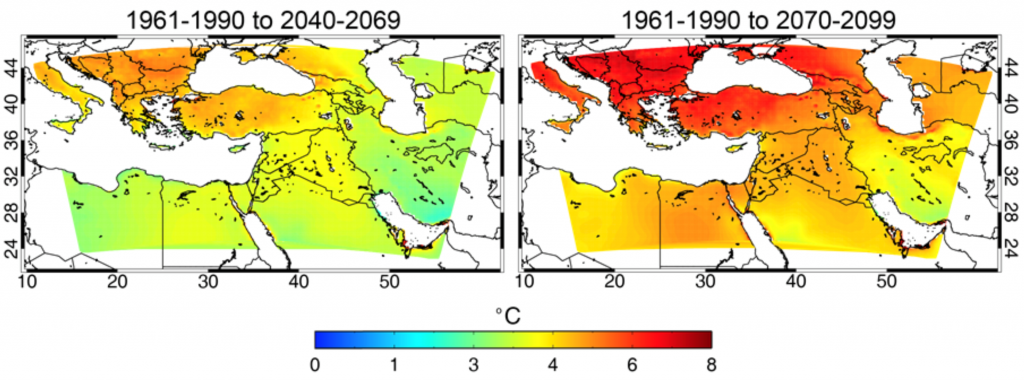 High resolution regional climate modelling is one of the strongest climate applications in VI-SEEM. Limiting the modelled area allows for much higher spatial resolution, which in turn enables a better representation of the local geography, but also allows for the deployment of more complex models. This helps to better understand and predict climate change, but also regional phenomena such as dust storms. One highly important topic of research is the fact that the Mediterranean is frequently affected by dust loads originating in North Africa and the Middle East. Accordingly, across many institutions, studying the impact of dust on weather and climate has a very high priority. NOA will address this topic by dynamic downscaling using WRF, coupled with its atmospheric chemistry component (WRF-CHEM). WRF-CHEM allows the simulation of the atmospheric state while calculating on-line dust emission mechanisms, and at the same time considering the feedback of dust by direct and indirect effects on atmospheric (thermo-) dynamics. The WRF- CHEM model is already operational at NOA, presenting an exceptional skill in forecasting dust transfers over the eastern Mediterranean region.
High resolution regional climate modelling is one of the strongest climate applications in VI-SEEM. Limiting the modelled area allows for much higher spatial resolution, which in turn enables a better representation of the local geography, but also allows for the deployment of more complex models. This helps to better understand and predict climate change, but also regional phenomena such as dust storms. One highly important topic of research is the fact that the Mediterranean is frequently affected by dust loads originating in North Africa and the Middle East. Accordingly, across many institutions, studying the impact of dust on weather and climate has a very high priority. NOA will address this topic by dynamic downscaling using WRF, coupled with its atmospheric chemistry component (WRF-CHEM). WRF-CHEM allows the simulation of the atmospheric state while calculating on-line dust emission mechanisms, and at the same time considering the feedback of dust by direct and indirect effects on atmospheric (thermo-) dynamics. The WRF- CHEM model is already operational at NOA, presenting an exceptional skill in forecasting dust transfers over the eastern Mediterranean region.
